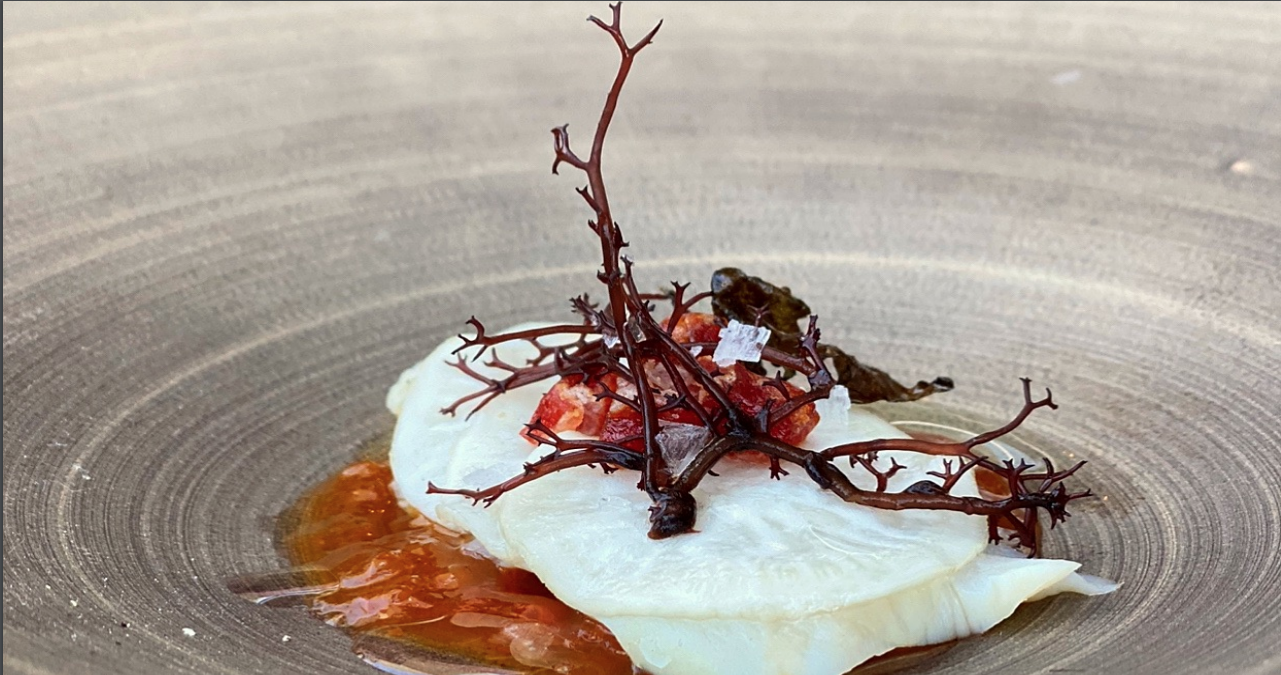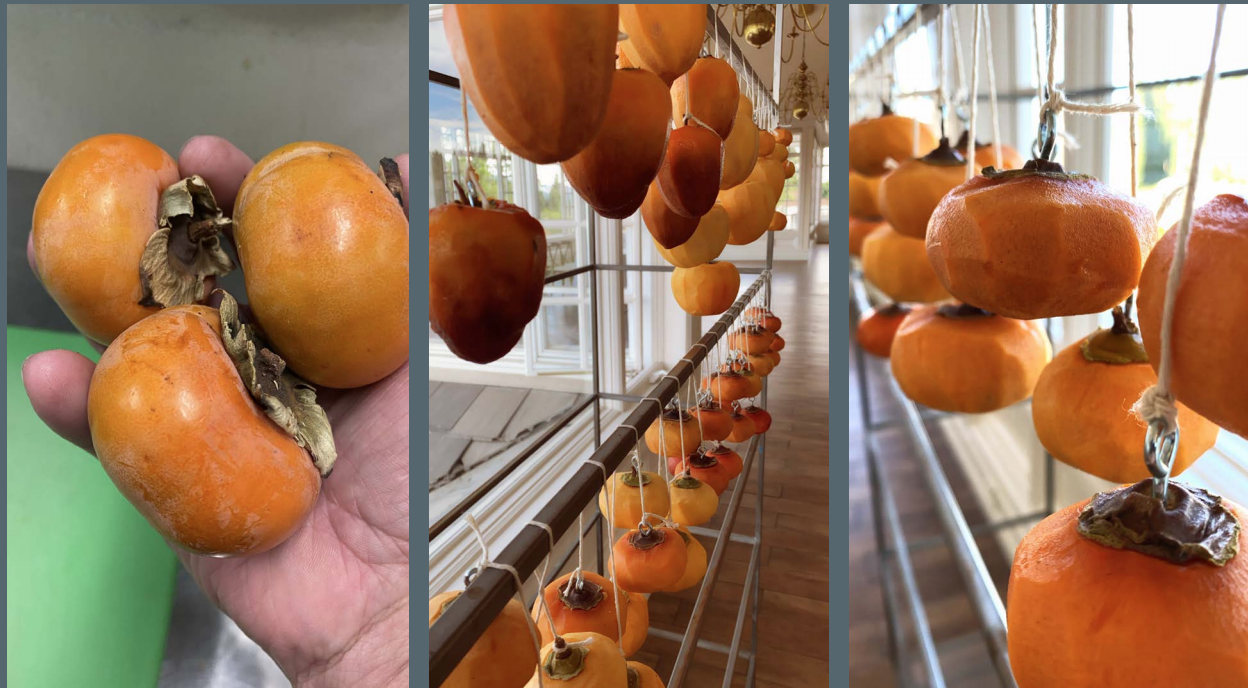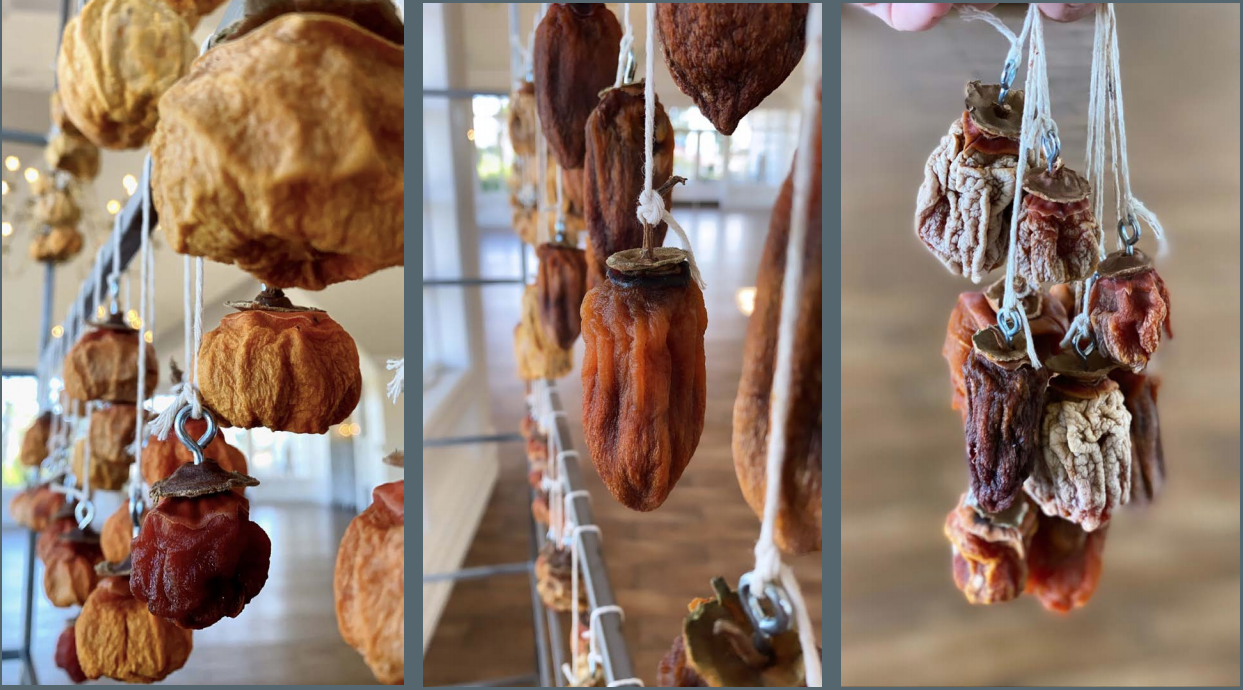As summer comes to a close, so will the busy season. Even though there will still be a smattering of events throughout the winter months (especially as postponed events are still trying to reschedule), some chefs may find themselves with some additonal time on their hands. Fortunately, there is never a shortage of ways to stay busy—recipe development, virtual cooking classes, to-go family meals—including one of the newest trend-forward pasttimes, Hoshigaki.
But what on Earth is Hoshigaki?
Hoshigaki, the traditional Japanese art of making dried persimmons, is a painstaking process that turns the flesh of Japanese persimmons into a tender, chewy, sweet, and spicy delicacy.
"If honey was a fruit, it would be the closest thing," said Chef Keith Lord with Stratəjē Fourteen, who discussed his experimentation with Hoshigaki during Catersource + The Special with his session Breaking the Culinary Rules: Adding Cash—and Cache—to Your Menu Offerings.
Persimmons are typically ripe for picking between October and January.
Even though Hoshigaki has gained popularity amongst the Instagram set in recent years, it's origins are quite ancient. Records show that people first made Hoshigaki during the Heian period (794 to 1185). One of the oldest types of dried fruit in Japan, it was useful because it did not spoil throughout the winter. Hoshigaki also put certain types of persimmons to use before they would ordinarily be ready to eat, thus lengthening the harvest period.
So, what makes Hoshigaki so unique? In a nutshell, Hoshigaki takes otherwise bitter persimmons and transforms them into a versatile, sweet treat. Many compare the taste of Hoskigaki to dried mangoes or honey.

Yellowtail, Hoshigaki, and radish. Photo courtesy Chef Keith Lord.
By drying persimmons, the tannins, which cause the bitterness, turn insoluble, thus eliminating the bitterness. Furthermore, drying persimmons in this manner draws out the moisture and concentrates each fruit’s sugar content onto the skin. The finished Hoshigaki can then be used in a variety of ways, much like you would dates or apricots.
Here are a few ideas on how to use Hoshigaki:
- Pair them with beef tartare, cheeses and charcuterie platters
- Add to a winter salad
- Chop them into granola for a brunch event
- Stir into tagines
- Bake them into cakes, puddings, and other desserts
- Grate them like cheese over dishes as a garnish
- Build them into sauces
- Incorporate them into cocktails
"I've gotten so many uses out of them," Lord said.
How to make Hoshigaki
So how do you make this delicious dried persimmon? The first step is to select the fruit. Pick astringent Japanese persimmons such as Hachiyas that have at least an inch of stem, because you’ll need that to hang the fruit when preparing.

Photo courtesy Chef Keith Lord.
Then you need to wash and dry the persimmons. The persimmons are then skinned as close as possible to the stem, and then hung by strings to dry.
Leave the fruit alone for the first week or so, until it develops a toughened skin. That’s when the real work begins. To develop the structure of the fruit and ensure that the sugars crystallize on the skin, the persimmons must be regularly massaged by hand. This can happen once every few days, or even every other day in order to make the best Hoshigaki.

Photo courtesy Chef Keith Lord.
The entire process can take between one and two months.
"You can hang them in all of the places of the banquet hall that are empty, you can hang them in your kitchen, hang them in your tasting room," Lord said, "because they're really beauitful.
"You can fill these empty spaces up with something colorful and fun."



